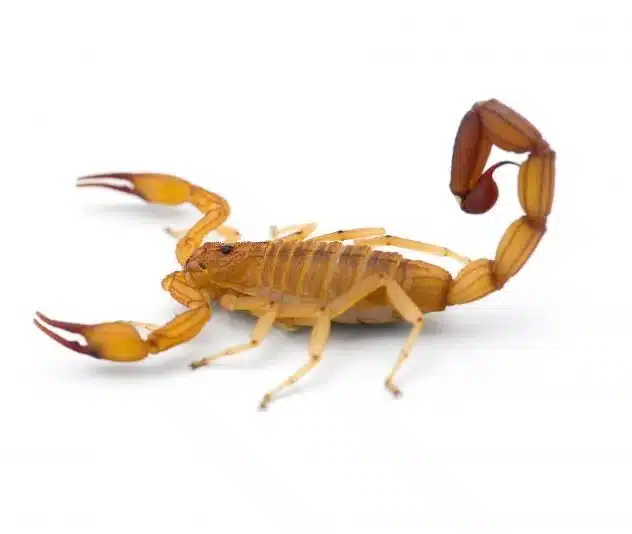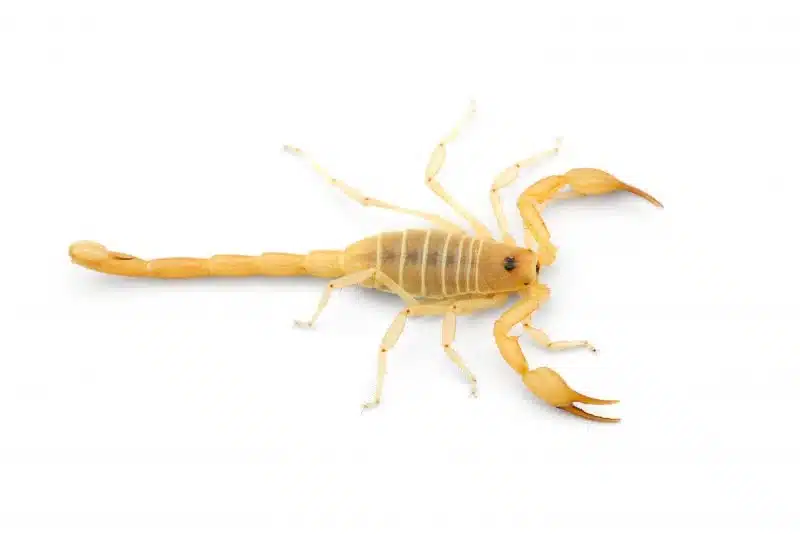Tree Scorpion Las Vegas
Home » Blog » Tree Scorpion Las Vegas
Tree Scorpion

The bark scorpion is a dangerous tree scorpion that you should be aware of if you live in the Southwest! They are often found on trees, and they can give you an extremely painful sting. However, not all tree scorpions are bark scorpions. There are also gray tree scorpions and desert hairy scorpions. Bark Scorpions have a dark brown or black exoskeleton with long claws and a thick tail. Gray Tree Scorpion look remarkably similar to bark ones but their coloration is lighter, more brown than black or dark brown. Desert Hairy Scorpion has stripes on it’s back which distinguishes it from the other two tree species.
The bark scorpion is a species of arachnid that lives in the tree trunks and bark, close to the ground. They are often found in desert trees, as well as closer to the water. Some people refer to them as “tree scorpions.” The bark scorpion has an average size of 2 inches long (or 5 centimeters). It’s gray or brown coloration blends well with its habitat.
There are many different types of scorpions that live in North America, and it can be hard to tell them apart. One type is the tree scorpion, which is a bark scorpion that lives near trees or logs. This article will discuss how they differ from other types of scorpions and what their venom does to humans.
The tree scorpion has a dark brown or black exoskeleton with long claws and a thick tail. They live in the forests of North America, climbing trees to find sleeping prey like possums and raccoons. Their venom will be discussed below, but it is very dangerous because they inject so much at once.
Tree Scorpion Venom and what to do when bit

If a tree scorpion gets venom into you, get medical help. Tree scorpion venom is not that poisonous, but can still be dangerous.
If you’re in the desert and get stung by a bark scorpion vs tree scorpion, it’s probably going to be more severe than if you are attacked by a gray or black scorpions in an area with trees. The bark will sting much worse because they have painful hooks on their tails which allow them to hang onto branches as well as human skin.”
There are many different species of tree scorpion in the world. A few common examples include bark scorpions and desert hairy scorpions. Bark scorpion venom is believed to be less toxic than that of a Desert Hairy Scorpion, but both can cause pain for up to three days and require medical attention when bitten. Some researchers believe that bark spider bites feel worse because they have larger teeth or jaws than other types of spiders such as tarantulas which can inject toxins into their prey with tiny hairs on their legs (see: Tarantula). The gray, or Chilean tree, woma also belongs to this category and its venom has been found to give humans shooting pains from chest muscles all the way down
Bark Scorpions vs. Desert Hairy Scorpions
The bark scorpion and the desert hairy scorpions are very similar in appearance. They both have a light tan color, they both have two large claws on their second set of legs (pedipalps) that protect them from predators when idle, they both emit a white liquid whenever threatened or captured by humans which is often mistaken for mucus but actually just contains an irritating chemical to deter human consumption, and lastly, they’re almost impossible to differentiate between unless you know what specific characteristics look like. The only difference is that the bark scorpion’s “tail” has bristles while the other doesn’t; this tail section can also be used as defense against attackers because it will curl up into knots with urticating hairs.
Gray Scorpion and how to Identify
A gray scorpion is a type of scorpion that has two claws and four walking legs. They live in tree bark or rocks, coming out at night to feed on other prey. The best way to identify them is by their size: they are usually less than an inch long (25 mm). Because many insects resemble the body structure of this species, it’s important to get close enough so you can see how small they really are!
-The most common identification feature for these creatures is the patterning on its backside which looks like wavy stripes with alternating segments colored black and yellowish brown
Bark Scorpion Size

The bark scorpion, also commonly called the tree scorpion, is a small and docile creature that spends most of its time in trees. It’s about two inches long with eight legs (six on each side) and two claws at the front end. The body is mainly brown but can be gray or reddish-brown depending on where it lives; which varies from region to region within North America. This tiny animal has an average lifespan of three years before it molts into adult form. When not eating insects, this arachnid feeds off other smaller tree scorpions by injecting them with venom through poison glands located just behind their jaws before sucking up any liquefied remains left over!
Baby Bark Scorpion
The bark scorpion is a small species of scorpion that grows to about three inches in length. They are usually found on tree bark and can climb trees with their claws (although they tend not to do this often). This is because the bark scrapes off easily, making it difficult for them to grip onto surfaces without getting injured…
The bark scorpion (Centruroides sculpturatus) is a tree-dwelling species of scorpions. They are nocturnal and feed on insects, spiders, other arthropods and small vertebrates such as lizards or frogs. Bark Scorpions measure in size at about one inch long from the tip of their tail to the end of their body with a stinger that can be up to .75 inches long. Unlike most scorpions they have eight legs rather than twelve but still possess claws for grabbing prey which it injects venom into like all other types of scorpion. The bark Scorpion has evolved over time so that its main predator, birds, cannot eat them due to the rough texture it exudes.
Baby Scorpion In House
If a baby scorpion in house is found, immediately call Green Wave Pest Solutions! If one is found in the house, then they should be put back outside immediately because of their dangerous sting. Call us and do not to touch them since it can cause serious medical problems for humans.
As an inexpensive pest control company Las Vegas, we can get rid of tree or bark scorpions from your property by using insecticides or baits around trees or other parts of your yard where you find them often.
What is a baby Arizona Bark Scorpion?
If you come across an Arizona Bark Scorpion in your home call our company for pest control services! If need any help with nuisance wildlife removal give us at call at (702) 540-6937.
In conclusion, We’ve been proudly serving customers for many years in Nevada. No matter what type of animal problem you’re having, we’ll take care of it all without damaging property or leaving messes behind like other companies do when they show up to “solve” your pest issues. We are a cheap pest control company Las Vegas. We provide the best and most affordable service in town, with no hidden costs! From bed bugs to ants we can take care of it all at an unbeatable price. Our prices start as low as $99 for full house removal which includes exterior perimeter treatment and interior treatments where needed.
Click here to schedule your appointment or give us a call today
If you need any help with nuisance wildlife removal, contact the pros at Green Wave Pest Solutions.



